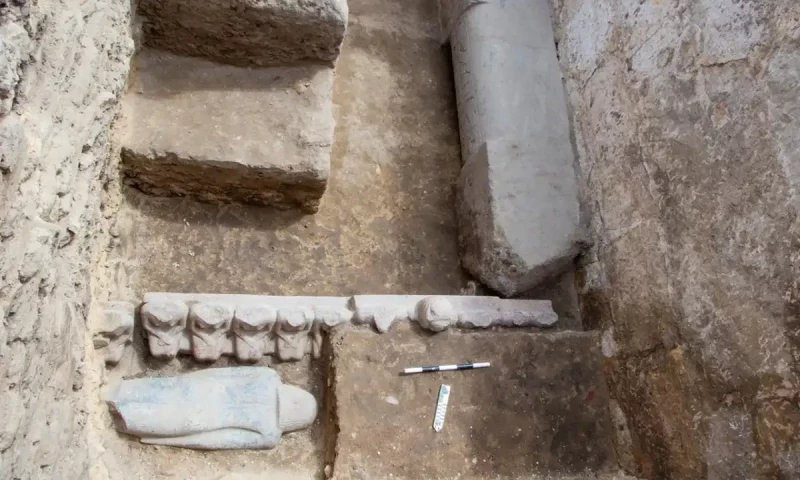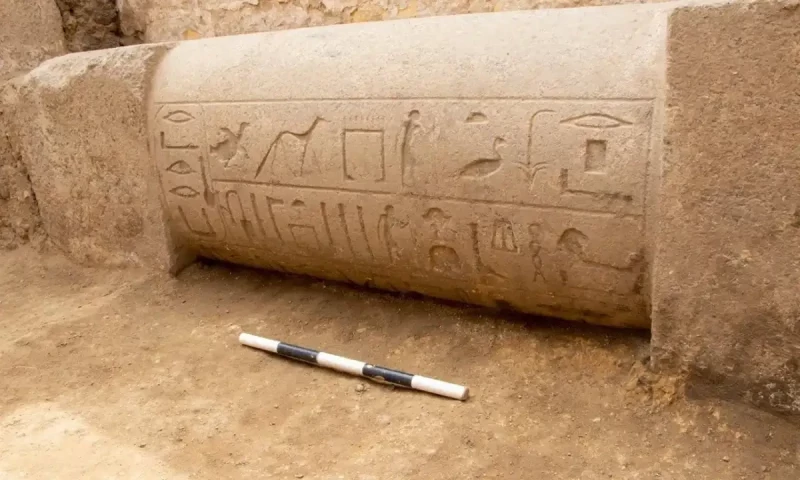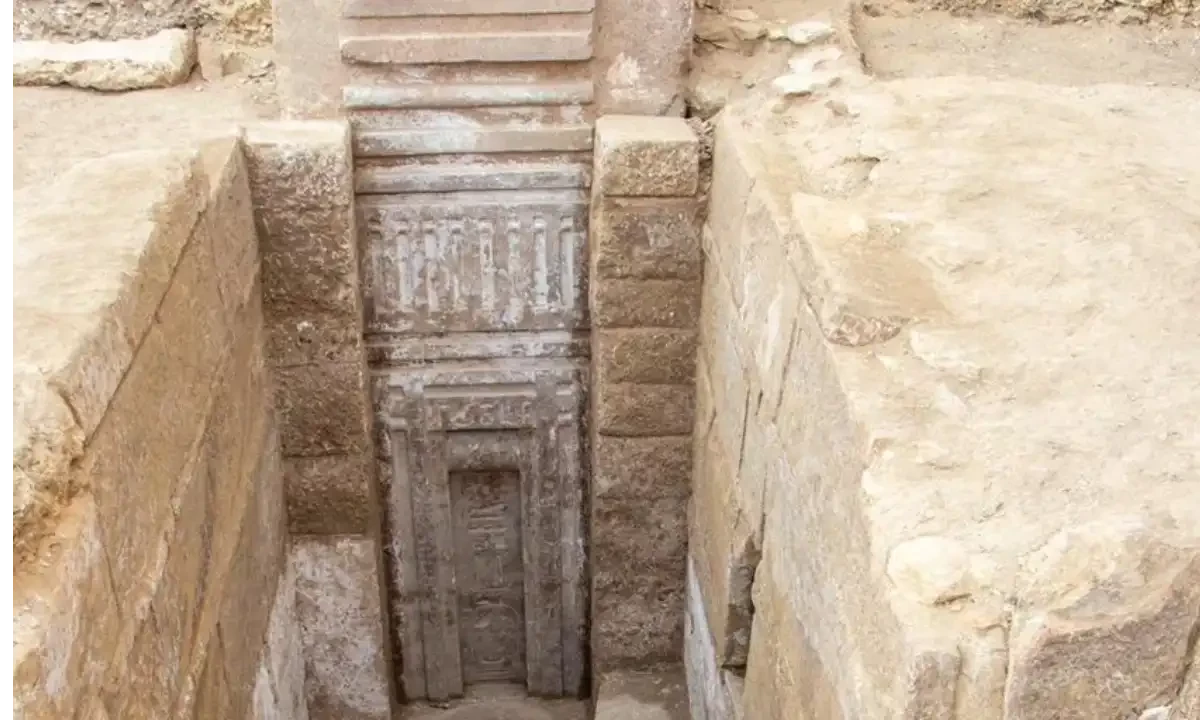What did archaeologists discover in tomb of Prince Waser-If-Re in Saqqara Necropolis?
Archaeologists working in the Saqqara necropolis, located south of Cairo, Egypt, have made a significant discovery: a 14-foot tall pink granite door within the tomb of Prince Waser-If-Re, the son of King Userkaf, founder of Egypt’s Fifth Dynasty.
Upon further examination, the team determined that the door was a false structure, leading to no interior passage.
This was found due to a collaborative effort between the Supreme Council of Antiquities and the Zahi Hawass Foundation for Archaeological and Heritage.
The tomb, which dates back 4,000 years, contains numerous noteworthy artifacts.
Among the discoveries are 13 high-backed chairs, each adorned with statues carved from pink granite, which are believed to represent the prince’s wives; however, two of the statues are headless.

The false door, measuring over three feet in width, is the first of its kind in both material and size found in ancient Egypt.
Hieroglyphs inscribed on the door list Prince Waser-If-Re’s titles, including “Hereditary Prince,” “Royal Scribe,” “Vizier,” “Judge,” “Governor of Buto and Nekheb,” and “Chanting Priest.”
Additionally, a secondary entrance, also constructed from pink granite, features a cartouche of King Neferirkare.
The excavation site yielded a toppled black granite statue exceeding four feet in length, as well as a red granite table approximately three feet in diameter, which bears inscriptions regarding ritual sacrifices.
While the tomb was originally constructed during the Old Kingdom, it appears to have been reused in the 26th Dynasty.

The team discovered a black granite statue of a male standing over four feet tall, inscribed with names and titles connecting it directly to the 26th Dynasty.
Read more
Ancient Egyptian tomb discovery in Abydos offers new insights into royal history
Archaeological discoveries at Ramesseum Temple redefine cultural, economic significance
Furthermore, archaeologists uncovered statues of King Djoser, his wife, and ten daughters
Dr. Zahi Hawass speculated that these statues were initially situated in a room adjacent to the king’s pyramid before being relocated to the tomb of Prince Waser-If-Re.
For the latest news, follow us on Twitter @Aaj_Urdu. We are also on Facebook, Instagram and YouTube.





















Comments are closed on this story.